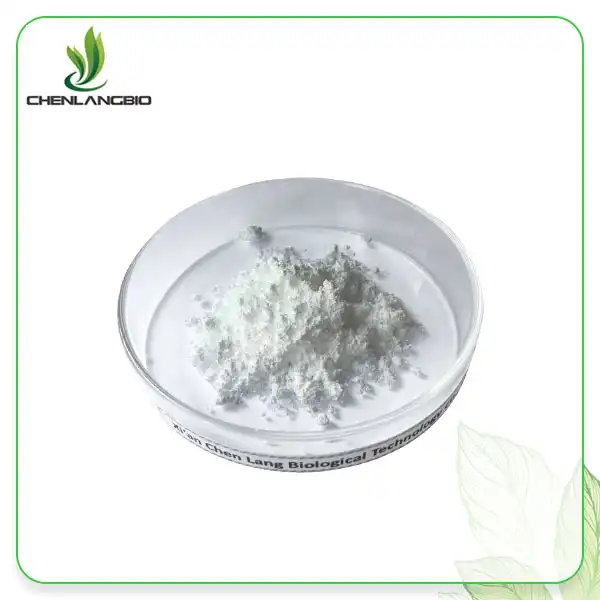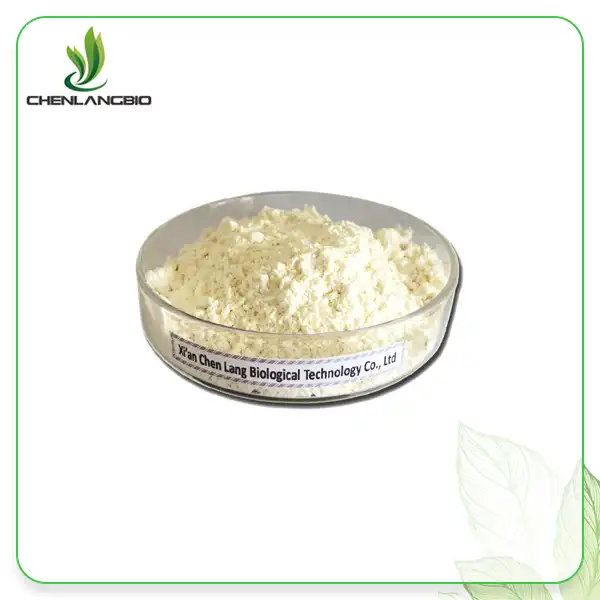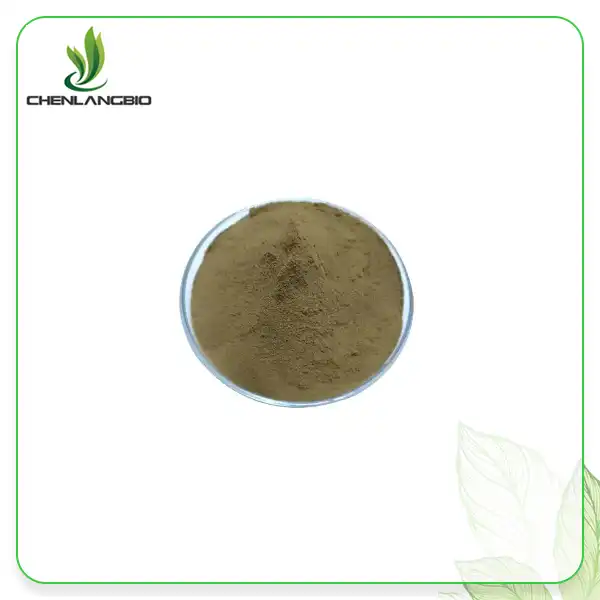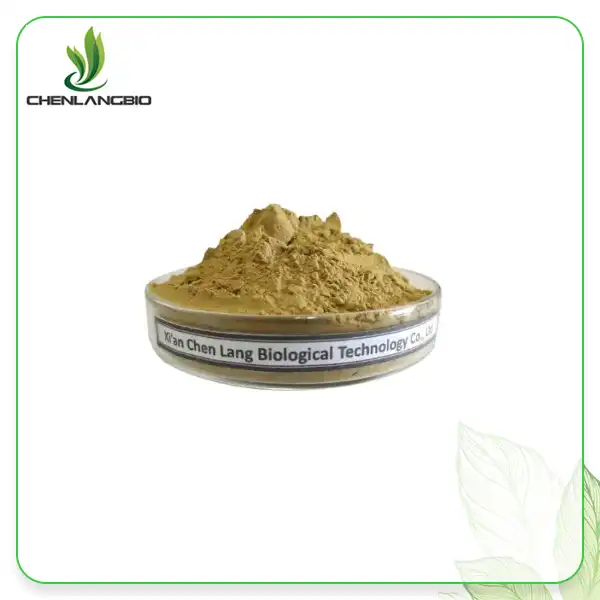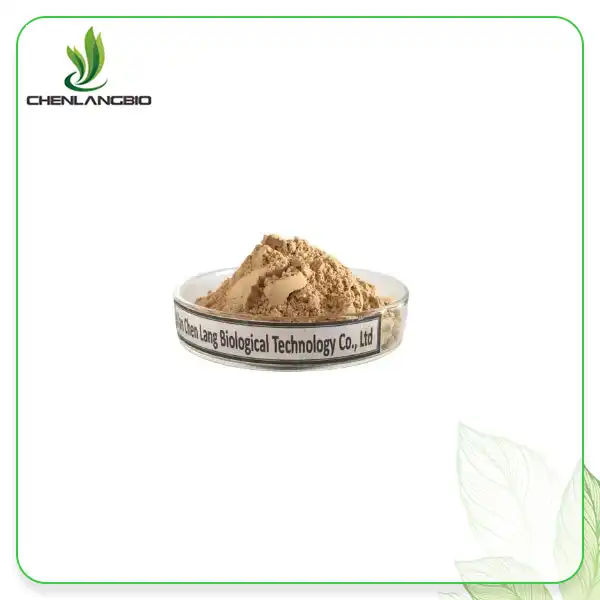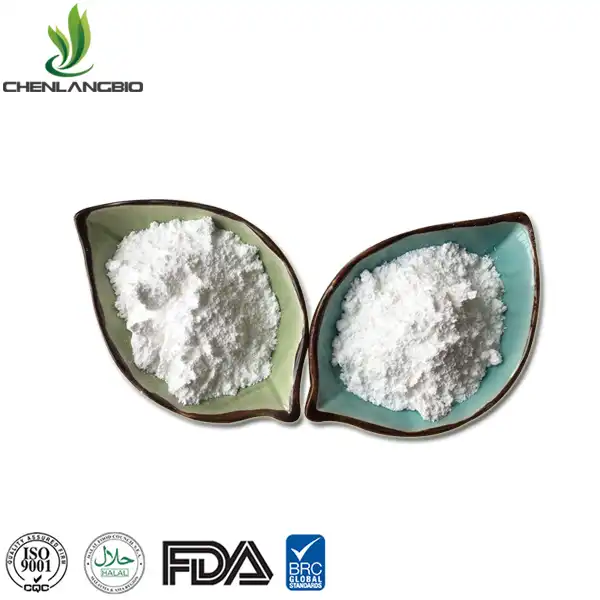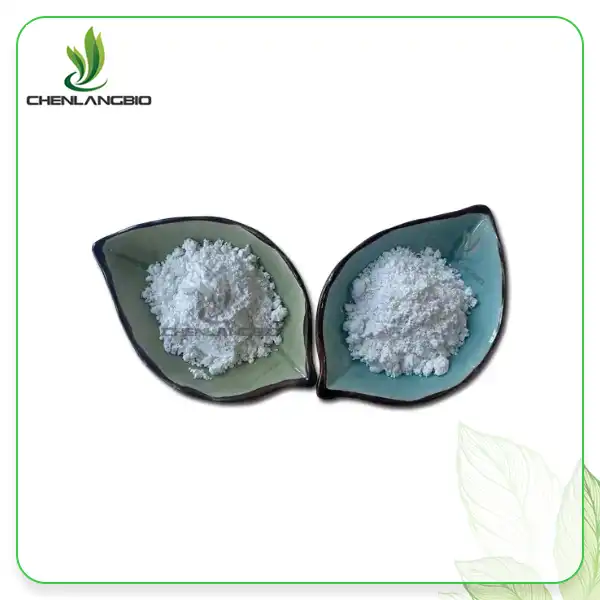How Does PQQ Work in the Body?
2025-04-02 11:16:23
Pyrroloquinoline quinone (PQQ) has emerged as a fascinating compound in the world of nutritional biochemistry, with significant implications for cellular function and overall health. This naturally occurring cofactor plays crucial roles in multiple biological processes within the human body. As a potent redox agent, Pyrroloquinoline Quinone functions as both an enzyme cofactor and a powerful antioxidant, supporting mitochondrial biogenesis, cellular energy production, neuroprotection, and metabolic regulation. Understanding how PQQ operates within our physiological systems reveals why this compound has garnered increasing attention in the fields of nutrition, longevity research, and preventative healthcare.
Cellular Mechanisms of PQQ Action
Mitochondrial Biogenesis and Function
Pyrroloquinoline Quinone demonstrates a remarkable ability to stimulate mitochondrial biogenesis – the process of creating new mitochondria within cells. This function is particularly significant as mitochondria serve as the primary energy-generating organelles in our bodies. When PQQ interacts with cells, it activates PGC-1α (peroxisome proliferator-activated receptor gamma coactivator 1-alpha), a master regulator of mitochondrial development. This activation triggers a cascade of events leading to the formation of new mitochondria and enhanced energy production. Research has shown that PQQ supplementation can increase mitochondrial content by 20-30% in some tissues, providing cells with improved capacity for ATP generation. Additionally, Pyrroloquinoline Quinone enhances mitochondrial efficiency by optimizing electron transport chain function, reducing proton leakage, and supporting proper calcium handling within these cellular powerhouses. This mitochondrial support is especially valuable for tissues with high energy demands, such as the heart, brain, and skeletal muscles, where optimal mitochondrial function is essential for maintaining peak performance and preventing age-related decline.
Redox Cycling and Antioxidant Properties
One of the most impressive aspects of Pyrroloquinoline Quinone is its extraordinary capacity for redox cycling – the ability to undergo repeated oxidation and reduction reactions without degrading. Unlike many other antioxidants that can only neutralize a single free radical before becoming inactive, PQQ can cycle through thousands of redox reactions, making it exponentially more efficient than traditional antioxidants like vitamins C and E. This redox cycling ability allows PQQ to continuously neutralize reactive oxygen species (ROS) and other harmful free radicals that can damage cellular components. In laboratory studies, Pyrroloquinoline Quinone has demonstrated antioxidant power that exceeds vitamin C by 5,000-fold on a per-molecule basis. Additionally, PQQ works synergistically with glutathione, the body's primary endogenous antioxidant, enhancing its recycling and effectiveness. Through these mechanisms, PQQ provides comprehensive protection against oxidative stress, which is implicated in numerous chronic diseases and accelerated aging. The remarkable stability and efficiency of PQQ make it an exceptional antioxidant that can provide sustained cellular protection even at relatively low concentrations.
Enzyme Cofactor Functionality
Pyrroloquinoline Quinone serves as an essential cofactor for multiple enzyme systems in the body, facilitating crucial biochemical reactions that would otherwise proceed slowly or not at all. As a redox cofactor distinct from nicotinamide nucleotides and flavin nucleotides, PQQ participates in reactions involving the transfer of electrons and hydrogen atoms. It particularly supports quinoproteins, a class of enzymes that require PQQ for their catalytic activity. These enzymes are involved in diverse metabolic processes, including amino acid metabolism, glucose utilization, and the breakdown of alcohols and aldehydes. In bacterial systems, where PQQ was first discovered, it participates in over 160 different enzymatic reactions. While the full extent of PQQ-dependent enzymes in humans is still being investigated, research indicates that it influences multiple metabolic pathways. By enhancing enzyme efficiency, Pyrroloquinoline Quinone helps optimize cellular metabolism, ensuring that energy-generating and biosynthetic processes proceed efficiently. This cofactor role represents one of the fundamental ways PQQ contributes to biological functions, supporting metabolic flexibility and cellular resilience against various stressors.
Physiological Benefits of PQQ
Neuroprotection and Cognitive Enhancement
Pyrroloquinoline Quinone demonstrates significant neuroprotective effects through multiple mechanisms that safeguard brain cells against damage and degeneration. PQQ stimulates the production of nerve growth factor (NGF), a protein essential for neuron survival, maintenance, and growth. This stimulation supports neuroplasticity – the brain's ability to form new neural connections throughout life – which is fundamental to learning, memory, and recovery from brain injuries. Additionally, Pyrroloquinoline Quinone protects neurons from excitotoxicity, a process where neurons become damaged or die due to excessive stimulation by neurotransmitters like glutamate. Research has shown that PQQ can reduce the size of damaged areas following ischemic events in the brain, suggesting potential applications for stroke recovery. The compound's ability to cross the blood-brain barrier allows it to directly influence neuronal metabolism and protect against oxidative stress within the central nervous system. Studies indicate that PQQ supplementation may improve cognitive function, particularly in areas of attention, working memory, and information processing. As neurodegeneration is often linked to mitochondrial dysfunction and oxidative damage, PQQ's dual role in supporting mitochondrial health and providing antioxidant protection makes it particularly valuable for long-term brain health and cognitive resilience against age-related decline.
Cardiovascular Protection
The heart, with its constant rhythmic activity and high energy demands, particularly benefits from pyrroloquinoline quinone's supportive effects on mitochondrial function and cellular energetics. PQQ helps maintain cardiac cell integrity by preventing oxidative damage to cellular membranes and proteins, which is crucial for preserving proper electrical conduction and contractile function. Research has demonstrated that PQQ can reduce the size of damaged areas following acute myocardial infarction (heart attack), potentially limiting the extent of permanent heart damage after such events. This cardioprotective effect appears to be related to PQQ's ability to activate mitochondrial protective mechanisms and reduce inflammation in cardiac tissue. Additionally, Pyrroloquinoline Quinone may help regulate lipid metabolism, potentially supporting healthy cholesterol levels and reducing atherosclerotic plaque formation in blood vessels. The compound also helps maintain the elasticity of blood vessels by protecting vascular endothelial cells from oxidative damage, potentially supporting healthy blood pressure regulation. Some studies suggest that PQQ may help modulate the activity of angiotensin, a hormone involved in blood pressure regulation, providing further cardiovascular benefits. Through these multiple mechanisms, PQQ represents a promising compound for comprehensive cardiovascular support, addressing both acute cardiac events and long-term vascular health.
Metabolic Regulation and Anti-inflammatory Effects
Pyrroloquinoline Quinone exerts significant influence over metabolic processes, particularly those related to energy production and glucose utilization. Research indicates that PQQ can enhance insulin sensitivity in tissues, potentially improving glucose metabolism and supporting healthy blood sugar levels. This effect appears to be related to PQQ's ability to activate AMP-activated protein kinase (AMPK), a crucial cellular energy sensor that regulates metabolic pathways. By promoting efficient energy utilization at the cellular level, Pyrroloquinoline Quinone may help optimize metabolic function throughout the body. Additionally, PQQ demonstrates notable anti-inflammatory properties, suppressing the production of pro-inflammatory cytokines and reducing oxidative stress that can trigger inflammatory cascades. This anti-inflammatory action has been observed in various tissues, including the brain, cardiovascular system, and liver. In the liver specifically, PQQ has shown hepatoprotective effects, reducing serum bilirubin and alanine aminotransferase levels, which are markers of liver damage. The compound also supports the liver's detoxification processes and helps maintain healthy liver function even under stress conditions. Through its combined metabolic and anti-inflammatory effects, Pyrroloquinoline Quinone provides comprehensive support for metabolic health, potentially benefiting individuals with metabolic syndrome, non-alcoholic fatty liver disease, and related conditions that involve both metabolic dysfunction and chronic inflammation.
Practical Applications and Considerations
Dietary Sources and Supplementation
While Pyrroloquinoline Quinone is present in various foods, the concentrations are relatively modest, making it challenging to obtain significant amounts through diet alone. The compound is synthesized by Gram-negative bacteria and enters the human food chain through bacterial interactions with plants and animals. Foods with notable PQQ content include fermented soybeans (natto), which contain approximately 61ng/g, making them one of the richest dietary sources. Other significant sources include parsley, green peppers, kiwi, and papaya, each containing around 30ng/g of Pyrroloquinoline Quinone. Beverages such as green tea and oolong tea also provide moderate amounts of PQQ. Interestingly, human breast milk contains substantial PQQ concentrations (140-180ng/ml), suggesting its importance in early development. Given the limited dietary availability, supplementation offers a practical way to achieve potentially beneficial PQQ levels. Commercial supplements typically provide PQQ as the sodium salt (PQQ-2Na+), which offers enhanced water solubility and bioavailability. Xi An Chen Lang Bio Tech Co., Ltd. produces pharmaceutical-grade Pyrroloquinoline Quinone powder with ≥99% purity, which maintains its efficacy for up to three years when properly stored in moisture-proof, UV-resistant containers. For those considering supplementation, the European Union has approved daily intake of up to 20mg for adults (excluding pregnant and lactating women), providing a reference point for responsible supplementation.
Quality Considerations and Bioavailability
The efficacy of Pyrroloquinoline Quinone supplementation largely depends on the quality, purity, and bioavailability of the product. High-quality PQQ should appear as a red to purple powder with excellent water solubility, characteristics that indicate proper synthesis and processing. The extraction and purification processes significantly impact the final product's purity and biological activity. Xi An Chen Lang Bio Tech Co., Ltd. employs advanced production techniques including dynamic countercurrent extraction, column separation technology, membrane separation, and spray drying to ensure optimal product quality. Their quality inspection center utilizes sophisticated analytical equipment such as high-performance liquid chromatography with evaporative light scattering detection (HPLC-ELSD), atomic fluorescence spectrometry, and UV-visible spectrophotometry to verify product specifications. Regarding bioavailability, Pyrroloquinoline Quinone demonstrates good absorption in the gastrointestinal tract, with peak plasma concentrations typically occurring 2-3 hours after oral administration. The compound shows distribution to various tissues, with notable accumulation in the heart, liver, kidneys, and brain – organs with high mitochondrial density and energy requirements. Studies suggest that PQQ has a relatively long half-life in the body, with metabolites detectable in urine for up to 24 hours after ingestion. To maximize bioavailability, many quality supplements formulate PQQ as the disodium salt, which offers enhanced solubility compared to the free acid form. Additionally, some research suggests that co-administration with CoQ10 may provide synergistic benefits, as both compounds support mitochondrial function through complementary mechanisms.
Therapeutic Applications and Future Research
The unique biochemical properties of Pyrroloquinoline Quinone have sparked interest in its potential therapeutic applications across various health conditions. Neurodegenerative disorders represent a promising area for PQQ research, given the compound's neuroprotective effects and ability to stimulate nerve growth factor production. Preliminary studies suggest potential benefits for conditions like Alzheimer's disease, Parkinson's disease, and age-related cognitive decline. Cardiovascular applications are similarly compelling, with research exploring PQQ's potential to limit damage following heart attacks and support overall cardiac health. Metabolic disorders, including diabetes and obesity, represent another frontier for PQQ research, based on its effects on glucose metabolism, insulin sensitivity, and mitochondrial function. Additionally, Pyrroloquinoline Quinone's robust antioxidant properties make it relevant for conditions characterized by oxidative stress, ranging from inflammatory disorders to environmental toxin exposure. In the cosmetic realm, PQQ's ability to support collagen production and protect against free radical damage has led to its inclusion in anti-aging skincare formulations. The compound's capacity to replenish collagen, promote amino acid absorption, and improve skin condition suggests benefits for reducing wrinkles and enhancing skin appearance. Current research is also exploring the potential synergistic effects of PQQ with other compounds, such as CoQ10, resveratrol, and various vitamins, to develop comprehensive approaches to health support. As investigation continues, Pyrroloquinoline Quinone may emerge as a valuable component in integrative approaches to various health challenges.
Conclusion
Pyrroloquinoline quinone stands as a remarkable compound with multifaceted actions in the human body, from enhancing mitochondrial function to providing exceptional antioxidant protection. Its diverse mechanisms offer promising applications for neurological, cardiovascular, and metabolic health. For premium quality PQQ and expert guidance, consider Xi An Chen Lang Bio Tech Co., Ltd., where cutting-edge extraction technology meets rigorous quality standards. Experience the difference that pharmaceutical-grade Pyrroloquinoline Quinone can make for your health or product formulations. Contact our specialists today at admin@chenlangbio.com.
References
1. Akagawa M, Nakano M, Ikemoto K. Recent progress in studies on the health benefits of pyrroloquinoline quinone. Biosci Biotechnol Biochem. 2016;80(1):13-22.
2. Harris CB, Chowanadisai W, Mishchuk DO, Satre MA, Slupsky CM, Rucker RB. Dietary pyrroloquinoline quinone (PQQ) alters indicators of inflammation and mitochondrial-related metabolism in human subjects. J Nutr Biochem. 2013;24(12):2076-2084.
3. Rucker R, Chowanadisai W, Nakano M. Potential physiological importance of pyrroloquinoline quinone. Altern Med Rev. 2009;14(3):268-277.
4. Zhang Q, Chen S, Yu S, et al. Neuroprotective effects of pyrroloquinoline quinone against rotenone injury in primary cultured midbrain neurons. Neurosci Lett. 2016;618:95-100.
5. Nakano M, Yamamoto T, Okamura H, Tsuda A, Kowatari Y. Effects of oral supplementation with pyrroloquinoline quinone on stress, fatigue, and sleep. Funct Foods Health Dis. 2012;2(8):307-324.
6. Bauerly KA, Storms DH, Harris CB, et al. Pyrroloquinoline quinone nutritional status alters lysine metabolism and modulates mitochondrial DNA content in the mouse and rat. Biochim Biophys Acta. 2006;1760(11):1741-1748.
Send Inquiry
Related Industry Knowledge
- Can Women Use Turkesterone?
- How to Deadhead Bergenia?
- What is Meglumine Powder? Benefits and Uses Explained
- How Does Spermidine Interact with Nitric Oxide Synthase (nNOS)?
- How Does Ergothioneine Support Cognitive Function?
- Can 4-Butylresorcinol be Used for Treating Melasma?
- Unlocking the Skin Benefits of Paeoniflorin 80%
- What is 5-Aminolevulinic Acid Used For
- Is Honokiol The Same As Magnolia Bark
- What are the Benefits of Lotus Leaf Extract Powder for Weight Loss



